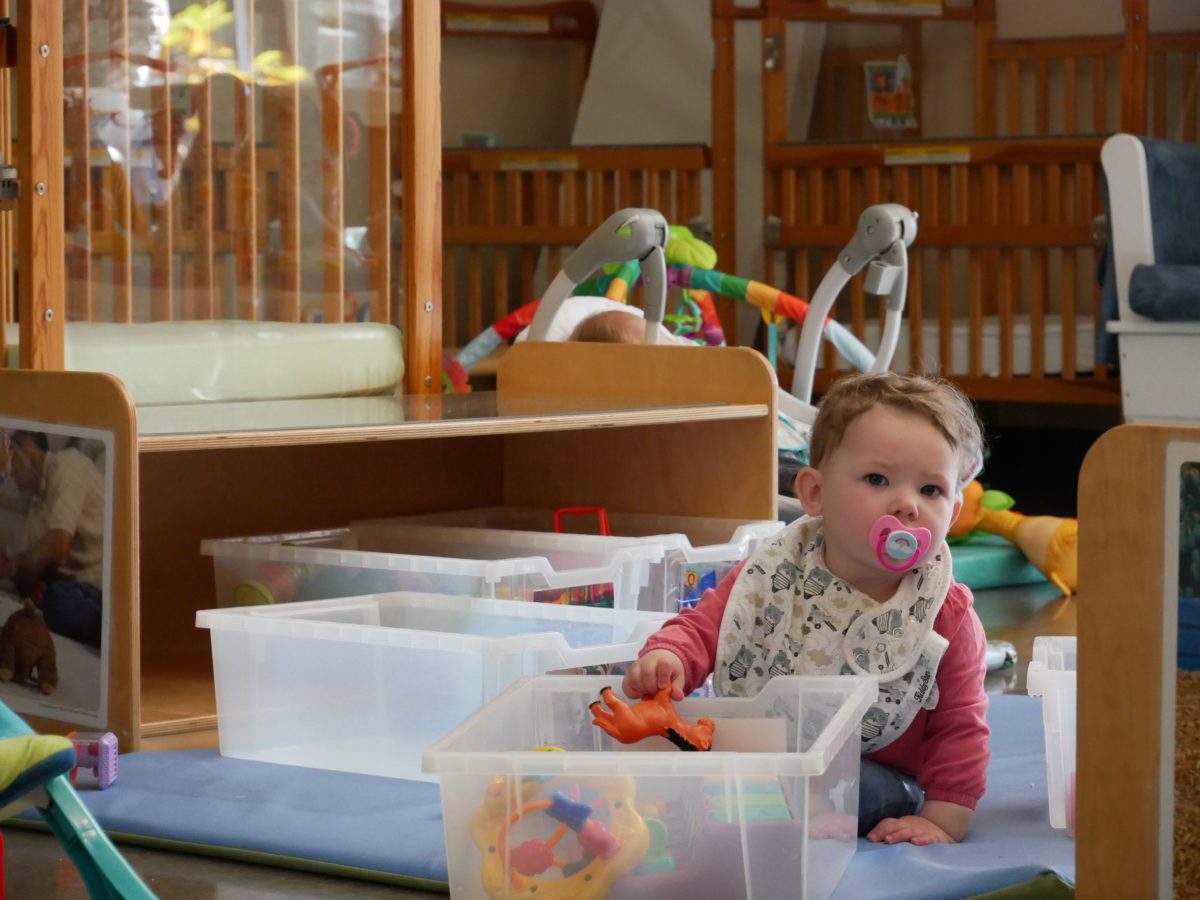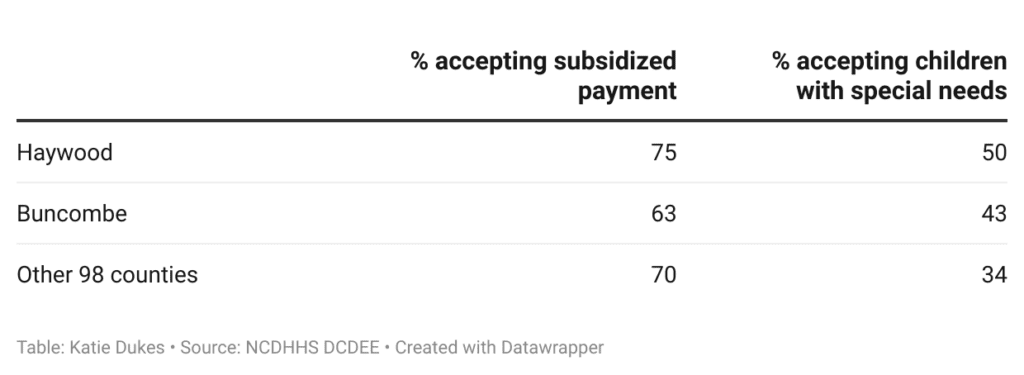
|
|
The Child Care Statistical Report for February 2023 is out in time to help us understand the state of child care in Haywood and Buncombe counties.
Packaging manufacturer Pactiv Evergreen recently announced that it was closing its mill in Canton in Haywood County.
The announcement of the mill closure raises questions about what comes next for residents in both Haywood and Buncombe (Haywood’s most populous neighboring county).
If you need a refresher on how to use the Child Care Statistical Report, you can read EdNC’s EdExplainer that walks you through the process. Last month we used it to ask questions about how licensed child care in the state’s eight majority-Black counties differs from the other 92 counties. This month’s report is 870 pages, but in light of the mill closure, we’re focusing on the 20 pages that relate to licensed child care in Haywood and Buncombe.
Haywood overview
According to the report, Haywood County has 36 licensed child care sites with 1,413 children enrolled. The vast majority of Haywood’s licensed child care sites are centers, which serve 1,380 children — almost 98% of total enrollees.
Of Haywood’s 32 licensed centers, 24 are eligible to accept subsidies as payment. Seventeen accept children with special needs. The number of children served by each center varies, but the average enrollment is 43 children per center.
There are just four family child care homes in Haywood County, serving 33 children. Three of these four sites have licenses that qualify them to accept subsidies as payment. These three sites are each at their maximum enrollment of eight students during the first shift. The fourth has five students enrolled in the first shift. Only one of them accepts children with special needs.
Buncombe overview
Buncombe has 111 licensed child care sites with 4,511 children enrolled. Like Haywood, the vast majority (99%) of children enrolled in licensed child care are at centers.
Of Buncombe’s 100 centers, 67 are eligible to accept subsidies and 47 accept children with special needs. Average enrollment is about 45 children per center.
Buncombe has 11 family child care homes. Six are eligible to accept subsidies, and just one accepts children with special needs. Only two are at maximum enrollment during the first shift, with average enrollment of about six children per home.
How Haywood and Buncombe compare to the rest of the state
Licensed child care in Haywood and Buncombe counties differs from child care in the state’s other 98 counties in several ways.
In the rest of the state, 23% of licensed sites are based in homes, but in Haywood and Buncombe it’s 11% and 10%, respectively. Both counties rely much more heavily on centers than the rest of the state.
Two other notable differences are in the percentage of sites accepting subsidies or children with special needs:

What it means
It’s hard to know what the mill closure will mean for licensed child care in Haywood and Buncombe, but we can speculate.
First, parents who are among the 1,100 employees set to lose their jobs probably will remove their children from child care while they are out of work. That could mean a major loss of income for child care providers and teachers in the area, which could lead to closures. If sites close before employment recovers, there’s no guarantee that the child care industry can rebound — especially with average hourly pay at less than $12 per hour.
Both Haywood and Buncombe have a significantly higher proportion of sites that accept children with special needs than the state’s other counties. If working parents are forced to pull their children with special needs out of these programs when they lose their jobs, it’s unclear how these children will continue to receive the support available via licensed child care sites.
When it comes to accepting subsidies as payment, Haywood’s rate is higher and Buncombe’s rate is lower than the rest of the state. Taken together, that may not seem notable, because their rates of subsidy acceptance average out to be close to the rates in the rest of the state. But given that the mill closure will have an outsized impact in Haywood County — a less populous county with fewer employment opportunities than Buncombe — it’s worth noting Haywood’s higher rate of subsidy acceptance eligibility. If licensed child care sites in Haywood do close, low-income families who receive child care subsidies could be hit particularly hard.
How the closure of the mill will affect licensed child care and the families who rely on it is yet to be determined, but the latest Child Care Statistical Report at least gives us a baseline for understanding the state of child care as more than a thousand workers prepare to lose their jobs.
Recommended reading



